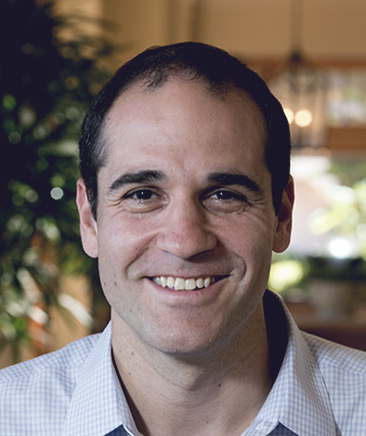A growing number of sophisticated oncology provider organizations manage treatment decisions with treatment pathways. These pathways are intended to ensure quality care and help the provider organization meet its objectives from a clinical, operational and financial standpoint. In many sophisticated provider organizations, these pathways are integrated into the EMR system, which can influence prescribing decisions directly by limiting the options available to a physician, or by placing added steps in the process to gain access to therapies that are less desirable to the provider organization.
Clinical pathways have been around since the early 1990s but have increasingly become a tool of choice for providers and payers alike, playing a critical role in defining how patients are treated. A clinical pathway is a multidisciplinary management tool based on evidence-based practice for a specific group of patients with a predictable clinical course, in which the different tasks by the professionals involved in patient care are defined, optimized and sequenced to improve outcomes, standardize quality of patient care and reduce cost of care. Implementation of pathways has shown to improve the quality and efficiency of patient care with improved patient satisfaction.
Based on ZS’s 2018 research on oncology providers, providers are increasingly using pathways and protocols as a mechanism to control prescribing choices. The study revealed that two-thirds of providers sampled are using pathways or guidelines within their organizations in some way. These mechanisms are tracked and tied to performance and, in some cases, used to adjust HCP incentives. Pathways originate from different sources ranging from third-party vendors such as VIA or Eviti, payer pathways such as AIM, and internally provider-developed pathways.
ZS’s research revealed that as many as three-fourths of providers with pathways rely on third-party vendors as a baseline and customize as needed.
Treatment pathways can have a profound impact on treatment decisions. Drug manufacturers would like to understand how their drugs are positioned in these pathways so that they can remove any restrictions for patients to access available treatment. Moreover, deciphering treatment pathways can help oncology manufacturers develop better value offerings and plan the right marketing and sales interventions for providers. “The amount of information to assimilate, to make good medical decisions in oncology, is just exploding and we're all going to have to rely on decision support tools at the site of care to do right by our patients,” said Dr. Jeffrey Patton, CEO of OneOncology and executive chairman of the board at Tennessee Oncology, in an interview with ZS. “There's just no way to keep up with all that information, so I think we're going to have to rely on pathways going forward to do what's right for our patients.”
“ZS’s research revealed that as many as three-fourths of providers with pathways rely on third-party vendors as a baseline and customize as needed.”
If manufacturers can gain insight into treatment pathways, it will help them to optimize their customer engagement in four ways:
- Improve access to patients: Manufacturers can ensure that providers have the information needed to allow access to their products for the right patients
- Tailor value offerings for providers: Variation in pathways reveal substantial information about providers’ preferences, which can help manufacturers tailor the right value offerings for each customer
- Optimize the contracting strategy: Knowledge of treatment pathways will enable manufacturers to better allocate resources toward contracting where it matters most
- Enhance competitive intelligence: Knowledge of competitive product placement in the provider pathways can guide a customer-targeting strategy for marketing and sales interventions
Getting started with deciphering treatment pathways
There are significant gaps in the current level of information available for treatment pathways through different sources and field intelligence. The limited information on the status of brands on pathways for different third-party vendors is inadequate for customer-facing field roles. The opaque nature of provider customizations to pathways and outdated information warrants a structured, data-driven approach to determine these treatment pathways. It’s feasible now to determine treatment pathways for each provider at a patient sub-segment level by leveraging advanced machine learning algorithms to fill in data gaps and extract pathways from patient-level data.
Let’s take the example of deciphering treatment pathways in prostate cancer. Given the presence of home-grown pathways and customization at the provider level, we want to understand treatment pathways at a provider level. Additionally, since treatment decisions vary by homogenous patient sub-types—for example, in prostate cancer patients can be further sub-classified by metastatic castrate-resistant prostate cancer patients (mCRPC), metastatic hormone-sensitive prostate cancer patients (mHSPC) and non-metastatic hormone-sensitive prostate cancer patients (nmHSPC)—we want to understand pathways at these patient sub-types. Here’s what a typical example of a pathway report for provider ABC would look like:
A best-in-class implementation of a pathway identification setup relies heavily on data, infrastructure and data-science-based techniques. Here’s what a pathway identification capability entails:
- Data engineering on real-world longitudinal patient data sources (claims, EMR, lab data, etc.) with good capture and representation of the market and physician-provider affiliations: As data in oncology has its own challenges in terms of capture and biases, a best-in-class implementation of a pathway identification system does not rely on a single data source. Multiple data sources ranging from patient-level longitudinal claims, lab data, EMR data sets and robust affiliations need to be integrated to get the best-in-class interpretation of pathways for key providers. The selection of the right data sources is crucial to building a successful, dynamic and self-learning system that accounts for new developments and market events in real time. Identifying pathways in certain tumor types that have significantly low patient populations may be difficult given the constraint on current data sets available with insufficient n-sizes at a provider level (albeit this is not a challenge for any of the relatively big tumors where pathways play a significant role in guiding treatment decisions).
- Patient cohort determination based on a deep understanding of the patient journey, medical expertise and data science algorithms (imputation, collaborative filtering and clustering) on patient data: Within oncology, a patient’s disease state and severity determine the treatment that a patient is put on. For example, nationally used guidelines like NCCN also provide recommendations based on certain patient types. The next step is to come up with consistent patient cohorts. The rationale for this step is that the treatment is comparatively homogeneous within these derived patient cohorts as opposed to the broader treated patient population, ensuring an apples-to-apples comparison.
For this step, patients are grouped together based on disease characteristics derived from available patient-level data. A major indicator for a patient’s cohort can be the use of a treatment selectively approved for a patient population. Apart from this, other characteristics are inferred based on tests and comorbidities. Based on the richness of available data, lab test results, physician notes (from electronic medical records) and other prognostic markers can also be used to demarcate these patient cohorts in a more accurate fashion.
A challenge of some of these characteristics is sparse availability in the data. This hinders the confidence level of some of the generated patient cohorts if the data is used right out of the box. Hence, data imputation is a key pre-processing step used to tease out missing characteristics of patients based on the available data. Tree-based algorithms can be used to impute key differentiating characteristics (such as metastasis) that may not be populated for all patients.
The designed patient cohorts are also cross-validated with medical oncologists to conform with broadly used treatment guidelines. This ensures that the derived patient cohorts are sensible from a clinical and therapeutic standpoint as well. - Patient line-of-therapy creation using RWE data and validated with medical experts: As oncology patients use several combination therapies and the claims data is sometimes recorded incorrectly, cleaning up the longitudinal transactional data for patients is an important step prior to teasing out the patient’s treatment journey. This involves assigning treatment regimens and lines of therapy to patients by processing the available transactional claims feed combined with medical expertise and an understanding of the evolving treatment landscape.
- Pathway identification and signaling using data-mining and advanced algorithms at the HCP and provider level: Pathways could be identified based on two key characteristics: consistency in physician prescribing behavior within a provider and variation in treatment pattern of provider from national guidelines by patient cohort and line of therapy. Considered together, these characteristics in turn inform a level of confidence we can assign to the presence of a treatment pathway in a provider.
- Validation of the presence of pathways using desk research and other sources: As pathway information for providers is not publicly available in a consolidated form, and data capture and granularity for any single data source is not complete; it’s important to validate the data-driven pathway identification methodology by collating evidences at the provider level. Extensive desk research, interviews with stakeholders at provider organizations and inputs from the field force can be used to supplement the data-driven findings. This validation builds confidence in the pathways within the organization and improves reliability and implementability by the field.
At this point in time, no single data source provides insight into provider treatment preferences and the prescribing control they exert using treatment pathways. We believe that using a combination of data sources with machine learning algorithms to deduce preferred treatment pathways for providers can fill this gap. It has significant commercial applications for oncology manufacturers and other healthcare stakeholders, and it can bring quality care to patients. It can also give a depth of visibility into the product’s performance at a provider institution and can reveal much more on providers’ preferences for choosing one product over the other in their pathways. This knowledge will allow manufacturers to tailor the right value offering for its customers and will help manufacturers deploy the right customer-facing roles—specific to the needs of the providers—to engage in an informed contracting strategy. Finally, the visibility into what products feature in the pathway can unearth the competitive product positioning that can be leveraged to shape targeted commercial or medical interventions.
“The most valuable part of pathways is not just the physician decision support to do the right thing, but it's standardizing care,” said Dr. Patton. “If you treat every lung cancer patient with certain characteristics the same, then the nurses learn how to take care of the side effects and anticipate side effects, and it's that standardization that actually is probably the biggest value driver in pathways.”

















